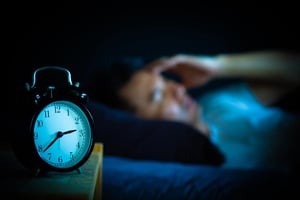But how do these genes act? The researchers discovered that, in part, they regulate the functions of the axons, i.e. the “extensions” that enable nerve cells to communicate with one another. On the other hand, the 956 genes are also associated with the activity of certain types of neurons found in the frontal cortex and the subcortical nuclei of the brain: areas that have already been “mapped”, in insomniacs, by other international teams, using brain imaging techniques (functional magnetic resonance imaging, in particular). Now the study published in Nature Genetics confirms these studies.
“Our study”, says Danielle Posthuma, a statistical geneticist at Vrije Universiteit, “shows that insomnia is influenced by hundreds of genes, each of small effect. These genes by themselves are not that interesting to look at. What counts is their combined effect on the risk of insomnia. The mapping of all the variants finally enabled us to have a ‘global’ picture. Using a new method, we were also able to identify the activity of specific types of nerve cells, like the so-called medium spiny neurons”.
Surprisingly, the researchers found no overlap between insomnia and the ability of some people (defined “skylarks”) to fall asleep early and wake up just as early, and that of other people (the “owls”) who, on the contrary, tend to go to sleep very late and wake up in the late morning. However, they discovered a clear connection between insomnia and the genes already associated with anxiety and depression. “This is a very important finding”, says Eus Van Someren, professor of neurophysiology at Vrije Universiteit, “because we have always searched for causes of insomnia in the brain circuits that regulate sleep. On the other hand, we have to shift our attention to the circuits that regulate emotion, stress and tension”. The Dutch researchers hope that this will open the doors to new strategies aimed at treating this disorder, insomnia, which is still difficult to control, with current therapies.

